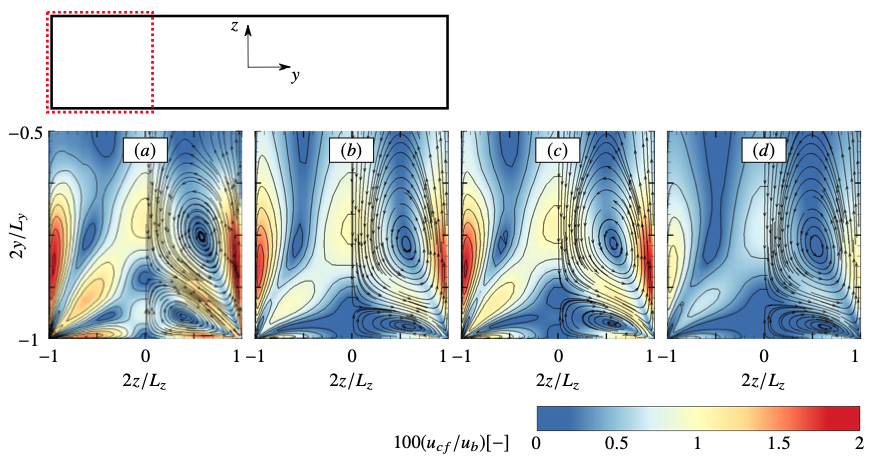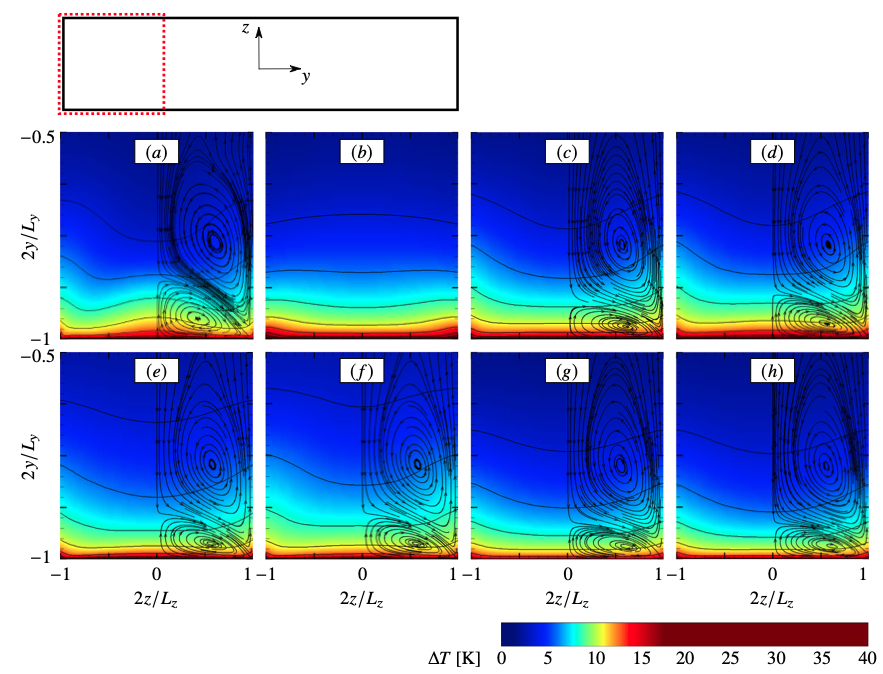T. Kaller, S. Hickel, N.A. Adams (2020)
AIAA Scitech paper 2020-0354. doi: 10.2514/6.2020-0354
We present well-resolved RANS simulations of a high-aspect-ratio generic cooling duct configuration consisting of an adiabatic straight feed line followed by a heated straight section ending with a 90° bend. The configuration is asymmetrically heated with a temperature difference of ∆T = 40 K. As fluid liquid water is used at a bulk Reynolds number of Reb = 110 000.
The setup follows an experimental reference case, which has also been investigated using a well-resolved LES. The current investigation focuses on the prediction capabilities of different RANS turbulence closure models for the duct flow field, defined by the interaction of secondary flows and turbulent heat transfer. In the straight duct only turbulence-induced secondary flow is present, which becomes weaker along the heated duct due to the viscosity reduction, leading in turn to a reduced mixing. In the curved section, the stronger pressure-induced secondary flow superimposes the turbulence-induced one increasing the mixing of hot and cold fluid. A well-resolved LES serves as comparison database for the straight duct results.



